Abstract
Well water was sampled from all four major wards in Katsina town. All 20 samples taken showed high coliform counts. Sixty-five per cent contained greater than or equal to 2400 coliforms per 100 ml while the remainder had counts ranging from 79 to 920. Faecal coliforms and non-cholera vibrios were detected in all samples. There was no significant relationship between the coliform counts and the distances of latrines to wells, water table to ground level, slope relationship between wells and latrines, the pH of water and whether the wells were left permanently open or not. Salmonella sp., Enterobacter sp. and Pseudomonas sp. were each isolated from about 10% of the samples, while Proteus sp. was isolated from 40%, Citrobacter sp. 15%, Alcaligenes sp. 5% and an unidentified Gram-negative rod from 5%. Only 2 (10%) of the sampled households, representing 23 (9.6%) of the 239 people exposed to well-water had pipeborne water in addition. It was concluded that well water in Katsina town could be a human health hazard.
Full text
PDF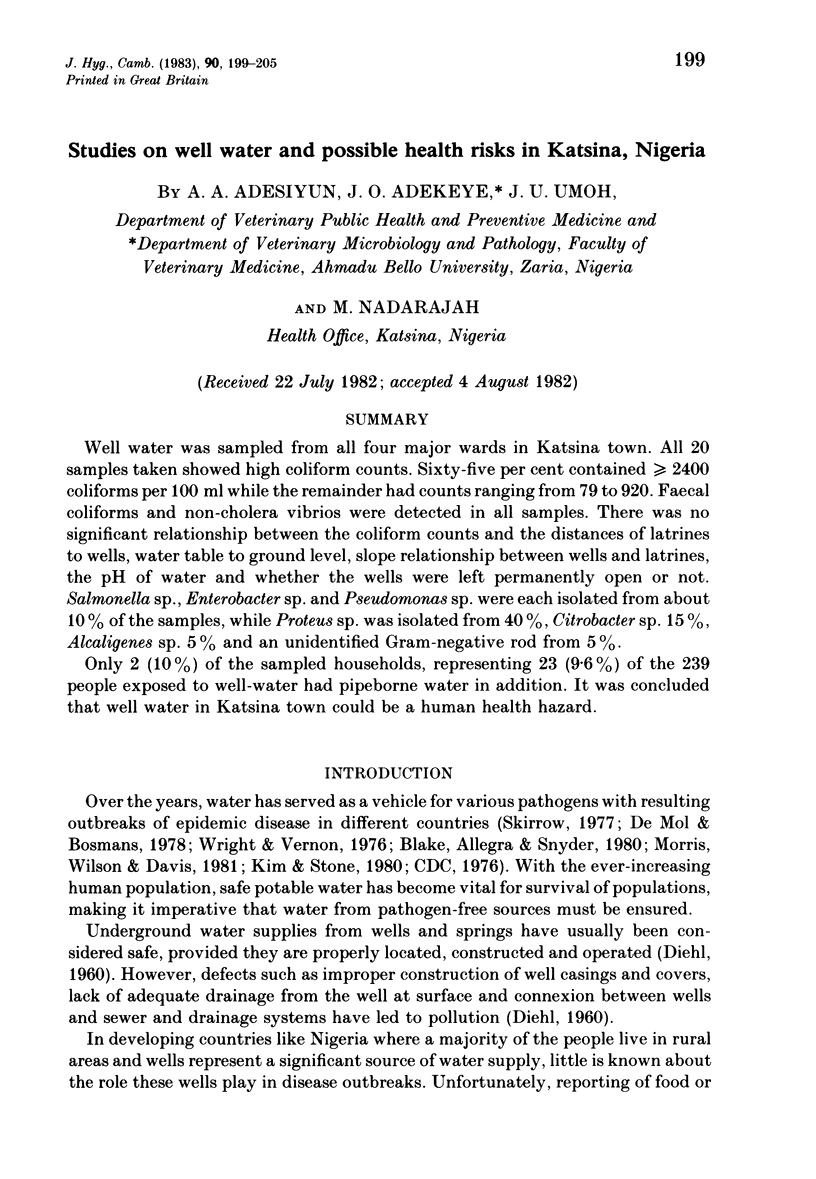
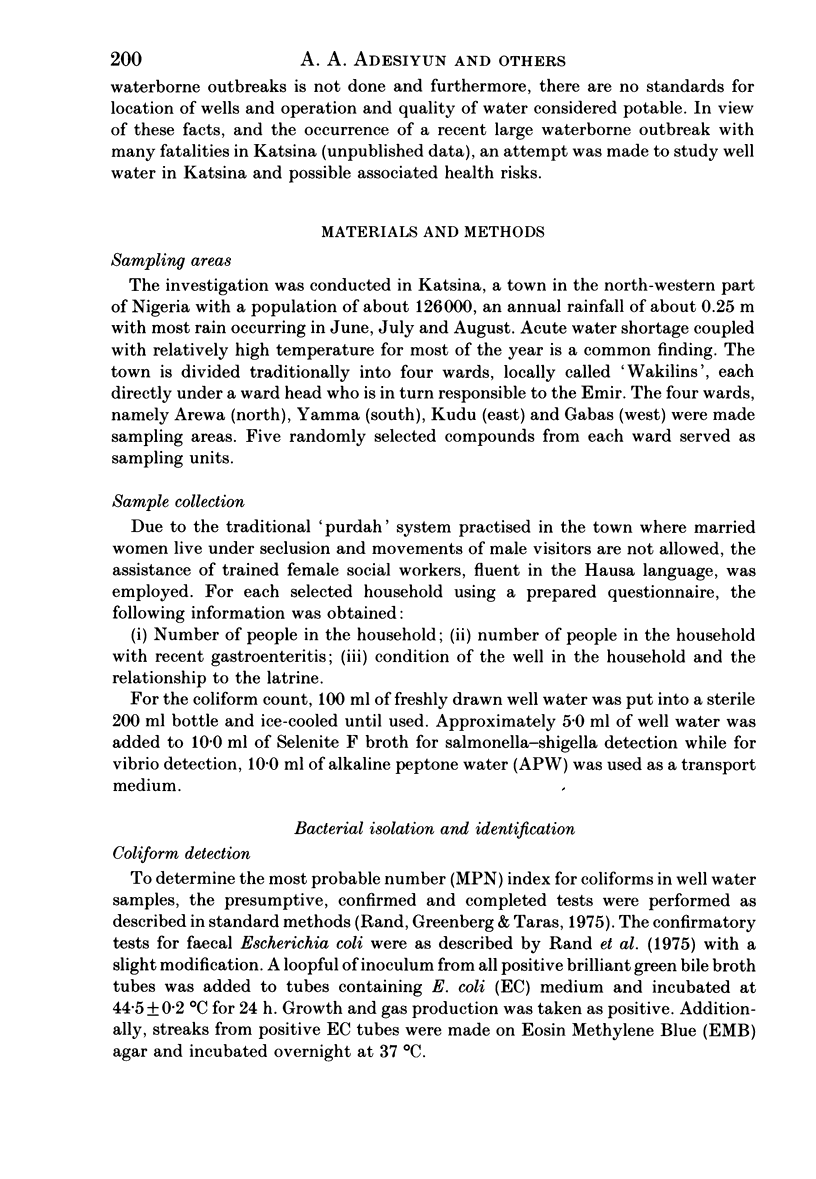
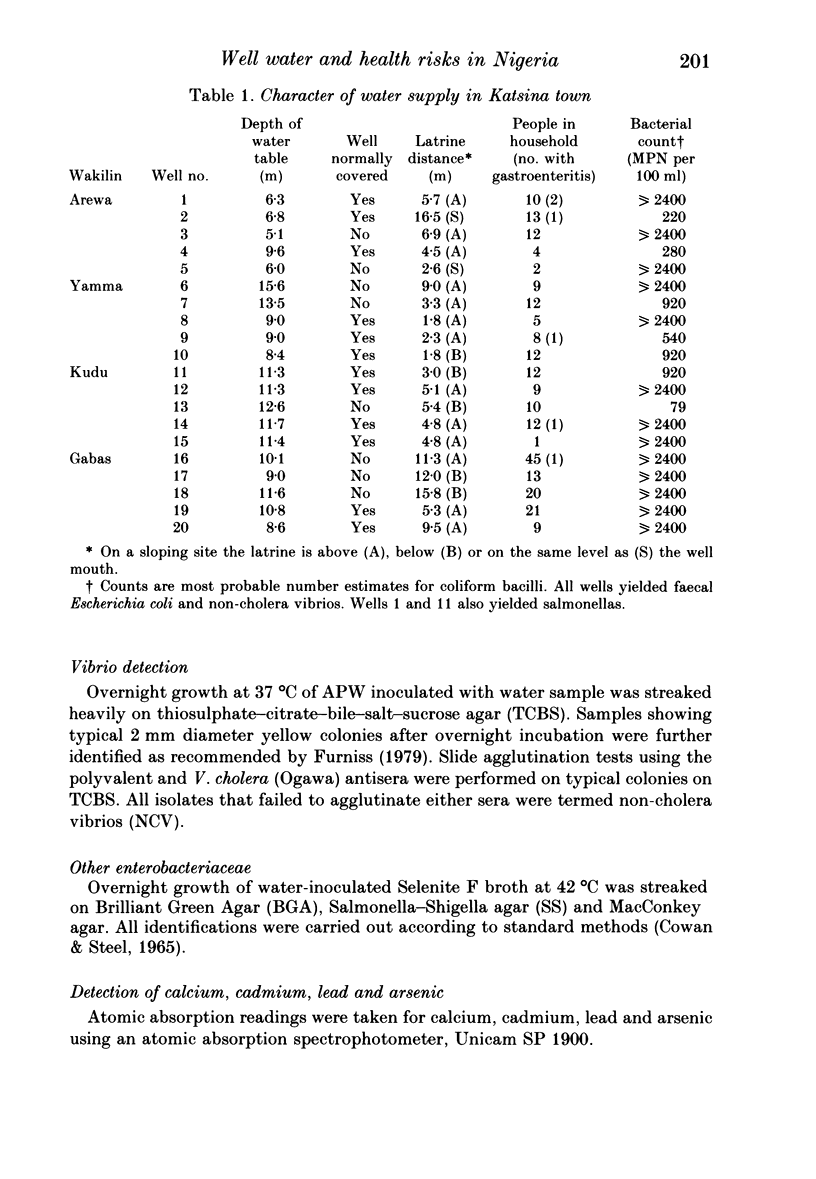
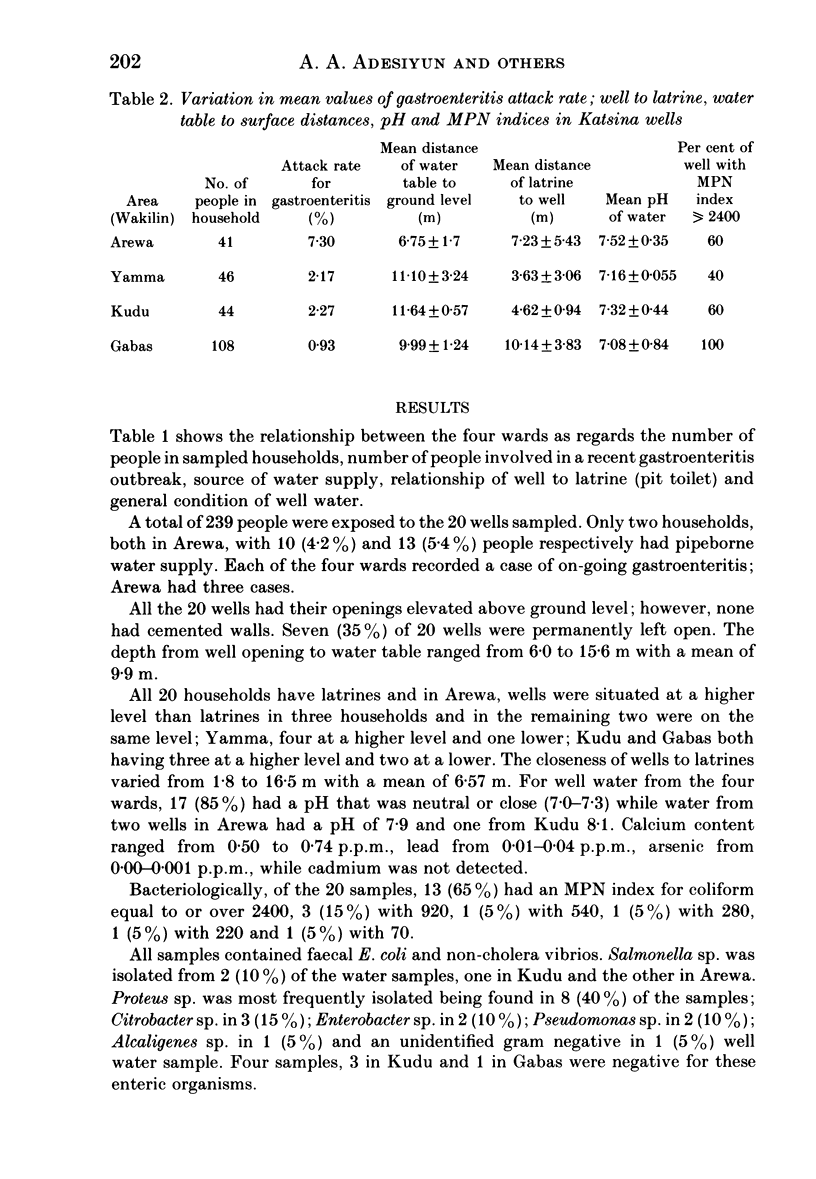
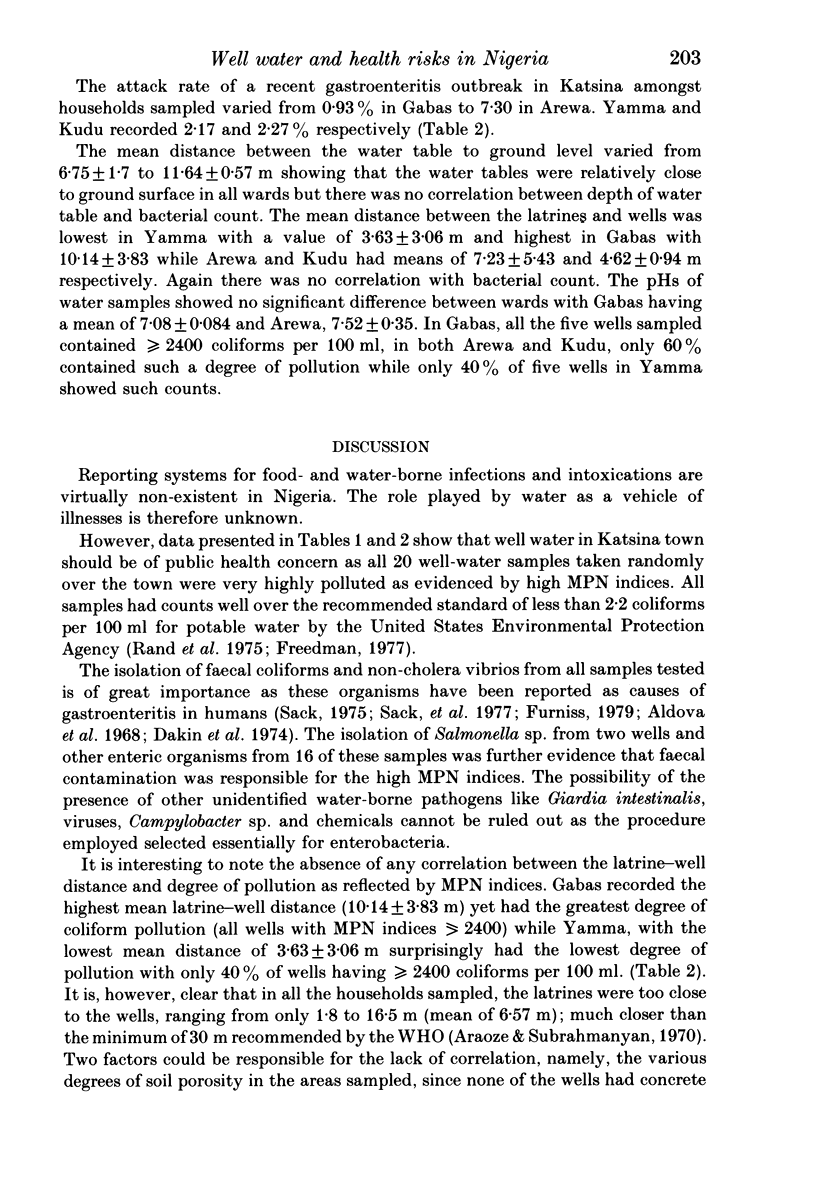
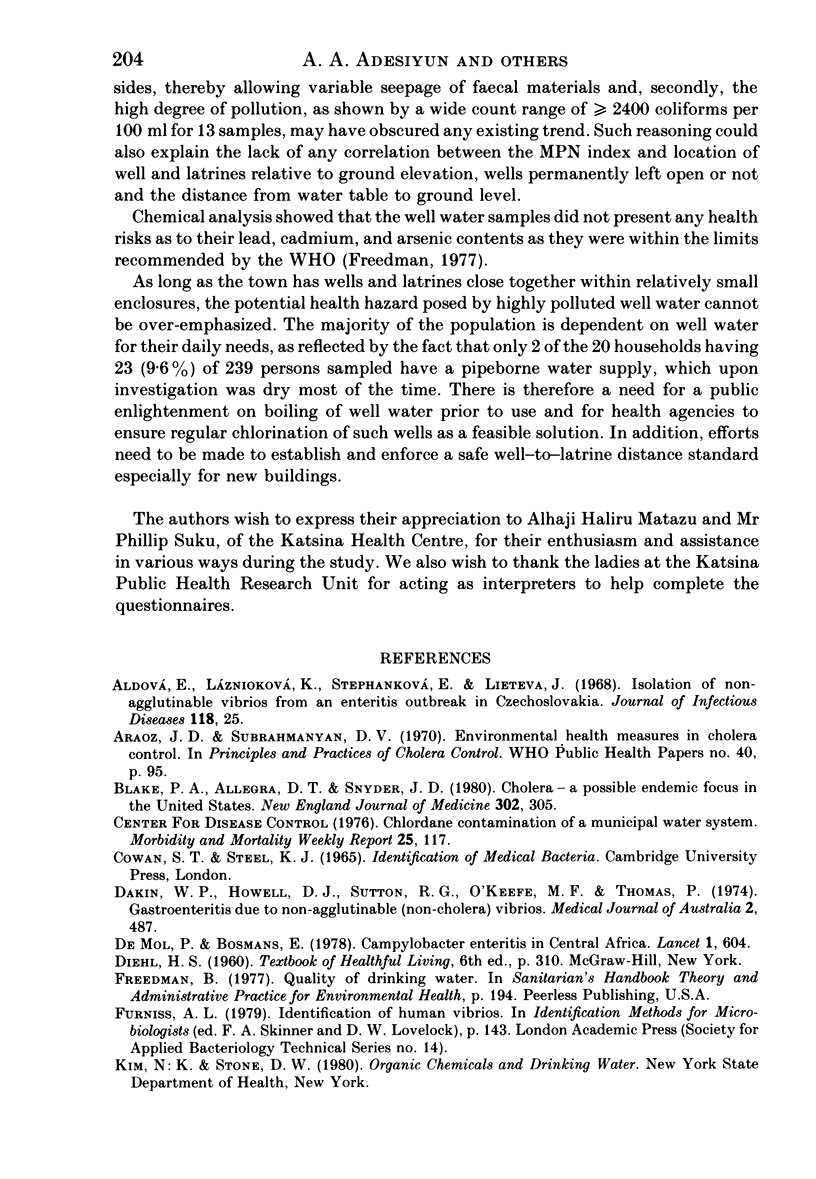
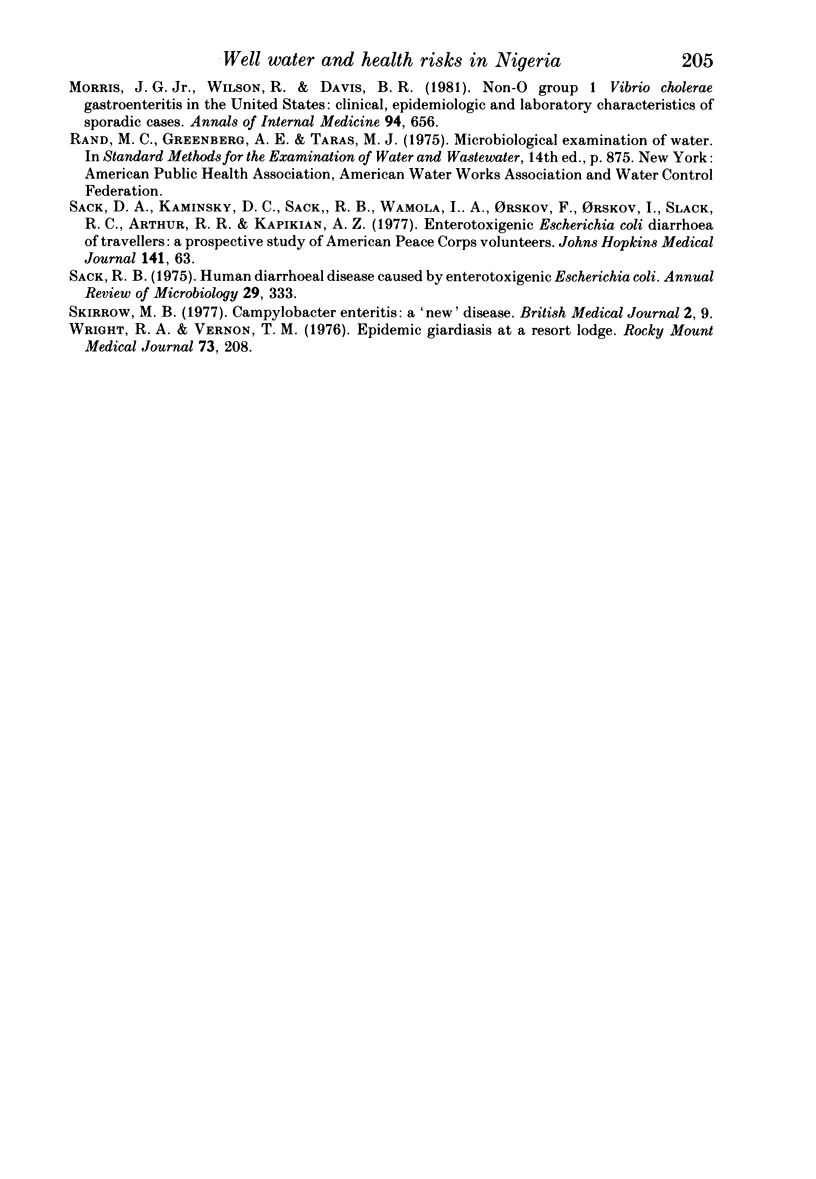
Selected References
These references are in PubMed. This may not be the complete list of references from this article.
- Aldová E., Láznicková K., Stepánková E., Lietava J. Isolation of nonagglutinable vibrios from an enteritis outbreak in Czechoslovakia. J Infect Dis. 1968 Feb;118(1):25–31. doi: 10.1093/infdis/118.1.25. [DOI] [PubMed] [Google Scholar]
- Blake P. A., Allegra D. T., Snyder J. D., Barrett T. J., McFarland L., Caraway C. T., Feeley J. C., Craig J. P., Lee J. V., Puhr N. D. Cholera--a possible endemic focus in the United States. N Engl J Med. 1980 Feb 7;302(6):305–309. doi: 10.1056/NEJM198002073020601. [DOI] [PubMed] [Google Scholar]
- Dakin W. P., Howell D. J., Sutton R. G., O'Keefe M. F., Thomas P. Gastroenteritis due to non-agglutinable (non-cholera) vibrios. Med J Aust. 1974 Sep 28;2(13):487–490. doi: 10.5694/j.1326-5377.1974.tb70935.x. [DOI] [PubMed] [Google Scholar]
- De Mol P., Bosmans E. Campylobacter enteritis in Central Africa. Lancet. 1978 Mar 18;1(8064):604–604. doi: 10.1016/s0140-6736(78)91044-9. [DOI] [PubMed] [Google Scholar]
- Morris J. G., Jr, Wilson R., Davis B. R., Wachsmuth I. K., Riddle C. F., Wathen H. G., Pollard R. A., Blake P. A. Non-O group 1 Vibrio cholerae gastroenteritis in the United States: clinical, epidemiologic, and laboratory characteristics of sporadic cases. Ann Intern Med. 1981 May;94(5):656–658. doi: 10.7326/0003-4819-94-5-656. [DOI] [PubMed] [Google Scholar]
- Sack R. B. Human diarrheal disease caused by enterotoxigenic Escherichia coli. Annu Rev Microbiol. 1975;29:333–353. doi: 10.1146/annurev.mi.29.100175.002001. [DOI] [PubMed] [Google Scholar]
- Skirrow M. B. Campylobacter enteritis: a "new" disease. Br Med J. 1977 Jul 2;2(6078):9–11. doi: 10.1136/bmj.2.6078.9. [DOI] [PMC free article] [PubMed] [Google Scholar]
- Wright R. A., Vernon T. M. Epidemic giardiasis at a resort lodge. Rocky Mt Med J. 1976 Jul-Aug;73(4):208–211. [PubMed] [Google Scholar]


